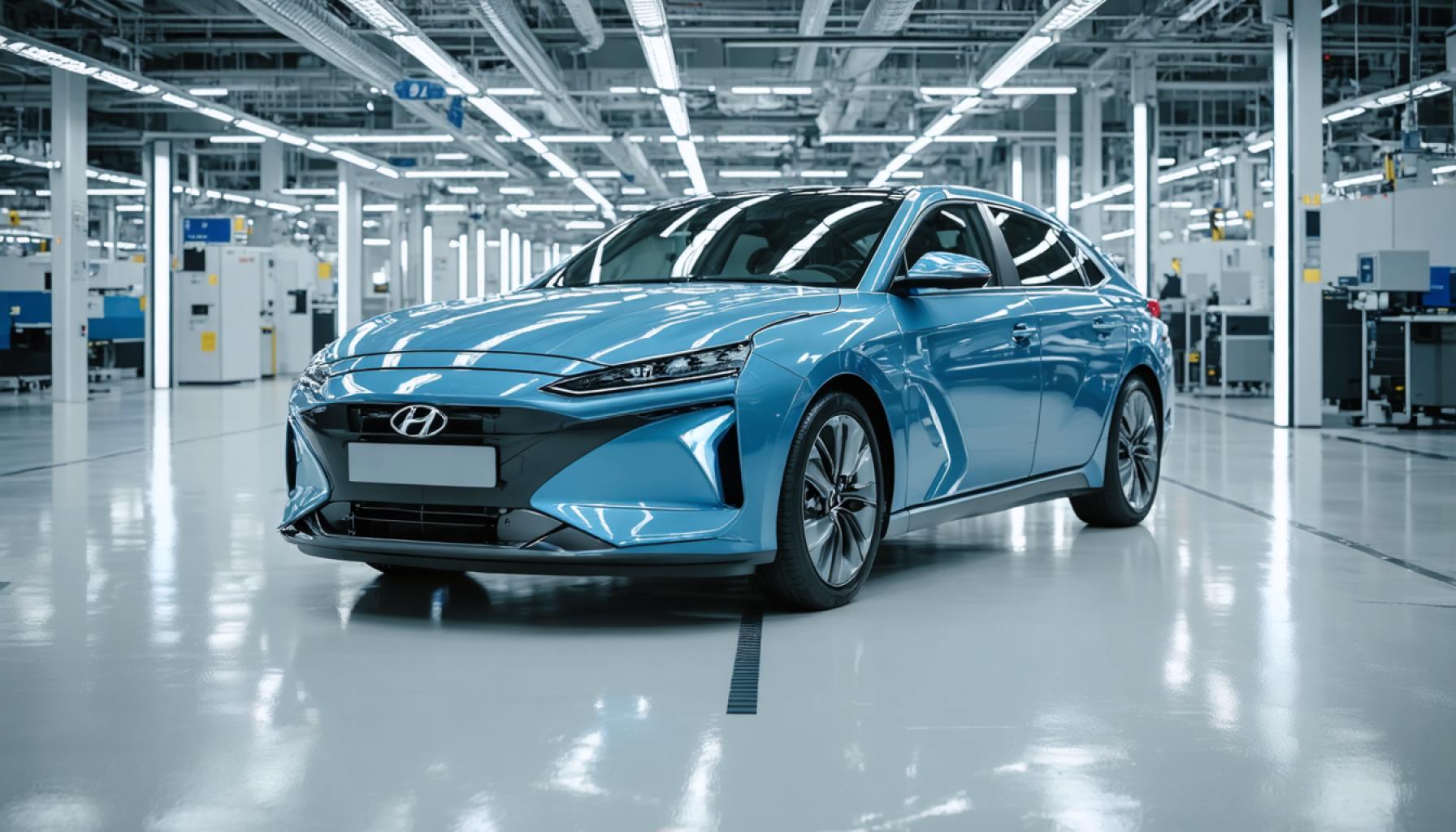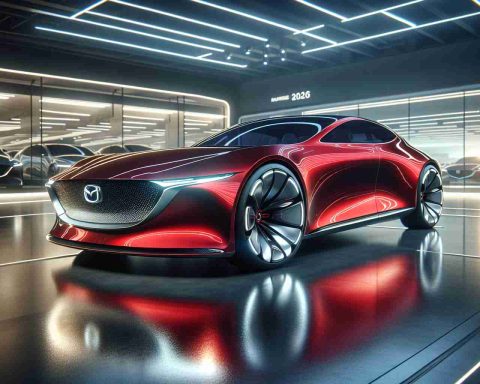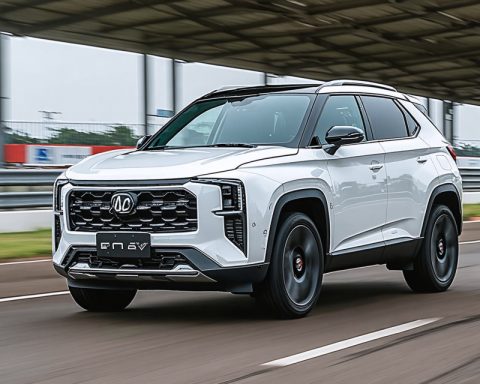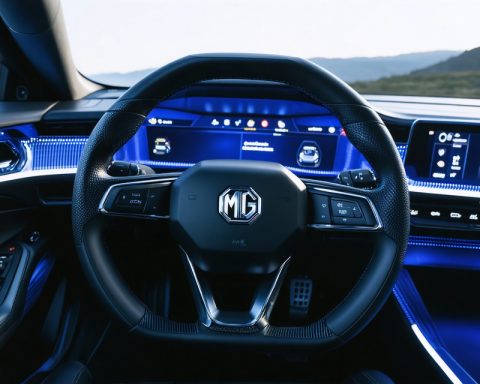- Hyundai commits to achieving carbon neutrality by 2045, showcasing its dedication to sustainability and innovation in the auto industry.
- The company heavily invests in alternative fuel technologies, emphasizing hydrogen fuel cells and electric vehicles, exemplified by the zero-emission Hyundai NEXO.
- Hyundai reimagines manufacturing processes, utilizing renewable energy and innovative recycling programs to reduce its carbon footprint.
- The automaker’s advanced technology and smart features, including autonomous driving capabilities, cater to tech-savvy and eco-conscious consumers.
- Hyundai’s shift toward sustainable innovation inspires consumers to rethink their transportation choices and join a collective journey towards environmental stewardship.
In recent years, the auto industry has witnessed a remarkable transformation, and at the forefront of this shift stands Hyundai. Once known merely for affordable, reliable vehicles, Hyundai now accelerates into the limelight as a beacon of sustainability and innovation.
Driving Towards a Greener Future
Imagine a car brand that not only evolves with the times but leads the charge towards a cleaner world. Hyundai’s ambitious vision to achieve carbon neutrality by 2045 sets this automaker apart. This pledge isn’t just a catchy slogan; it represents a tangible commitment to reshaping the industry with environmentally friendly practices at every turn.
The company invests heavily in alternative fuel technologies, with a strong focus on hydrogen fuel cells and electric vehicles (EVs). Their commitment is epitomized by the Hyundai NEXO, a hydrogen-powered SUV often hailed as a “vehicle for the future.” The NEXO stands as a testament to Hyundai’s forward-thinking strategy, offering zero emissions while boasting impressive range and performance.
Innovation and Inspiration
Hyundai doesn’t stop at producing cutting-edge vehicles; they reimagine manufacturing and resource use. Their state-of-the-art facilities employ renewable energy sources alongside innovative recycling programs. Hyundai also partners with global leaders in clean energy to reduce its carbon footprint and inspire other industry giants to follow suit.
Imaginative yet practical, Hyundai leverages their expertise to craft aesthetically pleasing vehicles replete with advanced technology. The inclusion of smart features, such as autonomous driving capabilities and advanced infotainment systems, attracts tech enthusiasts and environmentally conscious consumers alike.
A Broader Call to Action
What does Hyundai’s green revolution mean for the average person? Every step Hyundai takes towards sustainability is a stride for consumers who nurture the same aspirations for a healthier planet. Buying a Hyundai becomes more than a purchase; it becomes a partnership in a collective journey towards environmental stewardship.
Takeaway
Hyundai’s transformation from humble beginnings to a pioneer of sustainable innovation serves as a reminder that change is not only possible but can lead to a brighter, cleaner future. As Hyundai revolutionizes the industry, it invites all of us to rethink our transportation choices and embrace a vision where sustainability isn’t a distant goal, but an achievable reality today.
Hyundai’s Pivotal Role in Revolutionizing the Auto Industry with Green Technology
Exploring Hyundai’s Strategic Shift
Hyundai’s incredible shift from being known predominantly for budget-friendly vehicles to becoming a major player in sustainable and innovative automotive solutions is a testament to strategic foresight and adaptability. This advancement is underscored by their ambitious goal to achieve carbon neutrality by 2045, reflecting a commitment that extends beyond manufacturing to encompass global environmental responsibility.
Hydrogen and Electric Vehicles Take Center Stage
Hyundai has become a leader in alternative fuel technologies, particularly with its advancements in hydrogen fuel cells. The Hyundai NEXO exemplifies this, offering zero emissions, a range of up to 380 miles per fill, and rapid refueling times compared to traditional electric vehicles (EVs). Additionally, Hyundai’s electric vehicle lineup, featuring models like the IONIQ 5, demonstrates significant advances in battery technology, with fast charging capabilities that can reach 80% in just about 18 minutes.
Innovations Beyond Emissions
Hyundai’s commitment to green technology isn’t limited to emissions reduction. Their manufacturing processes increasingly integrate renewable energy and efficient resource usage. Hyundai’s assembly plants employ solar energy and partake in innovative recycling programs, such as repurposing automotive materials and reducing waste through circular economy principles.
Hyundai and Global Collaborations
Hyundai is not alone in its pursuit of sustainability; the company partners with global leaders in clean technology and renewable energy, fostering a collaborative approach to carbon reduction. Such partnerships include joint ventures with battery manufacturers to enhance EV range and efficiency, and collaborations with tech firms to pioneer smart vehicle systems.
Real-World Use Cases and Industry Trends
How to Transition to a Greener Vehicle
1. Evaluate Your needs: Assess your daily travel needs and consider the benefits of owning a hybrid or fully electric vehicle.
2. Consider Infrastructure: Identify the availability of charging stations and hydrogen refueling stations in your area.
3. Research Incentives: Investigate government incentives for green vehicle purchases, which can significantly reduce the cost of ownership.
Market Outlook for Green Vehicles
The growth of EVs and hydrogen vehicles is projected to continue accelerating, with governments around the world implementing stringent emissions standards. Analysts forecast that by 2030, electric vehicles could comprise more than 50% of new car sales globally.
Review: Pros and Cons of Hyundai’s NEXO versus Electric Vehicles
Pros of Hyundai NEXO:
– Quick Refueling: Hydrogen refueling takes as little as 5 minutes for a full tank.
– No Emissions: Pure water vapor is the byproduct.
– Impressive Range: Comparable to many gasoline vehicles.
Cons of Hyundai NEXO:
– Infrastructure Limitations: Refueling stations are still sparse outside major metropolitan areas.
– Higher Initial Costs: Price points for hydrogen vehicles can be steep compared to traditional and electric cars.
Actionable Recommendations
For consumers interested in more sustainable options, explore the Hyundai lineup to find a vehicle that meets your needs while contributing to a greener future. Consider the infrastructure available in your area and take advantage of government incentives to reduce initial costs. Engage in community discussions to advocate for increased support and development of renewable fuel infrastructure.
For more insights and information on Hyundai’s green initiatives, visit Hyundai.






















